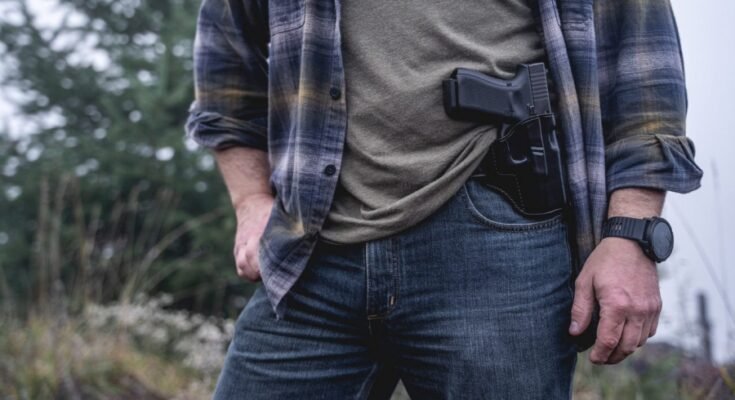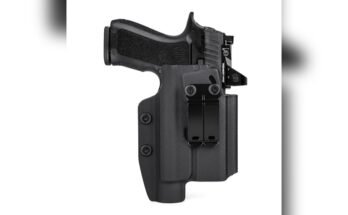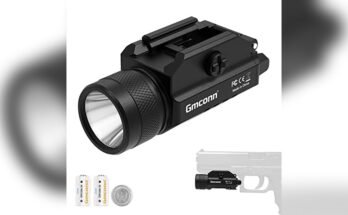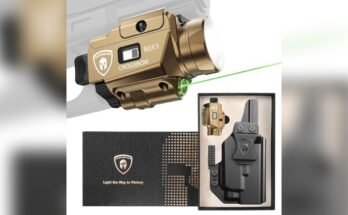I’ve carried and tested a wide range of holsters over the years, from inside-the-waistband to shoulder rigs. Cross-draw stood out because it solves real problems for drivers, outdoorsy folks, and anyone who needs access while seated. In simple terms, a cross-draw holster rides on the opposite side of your dominant hand, angled forward, so your hand reaches across your body to draw. If you’ve been asking, what is a cross-draw holster?, this guide breaks it down with clear examples, practical tips, and research-backed insights to help you decide if it fits your lifestyle and training plan.
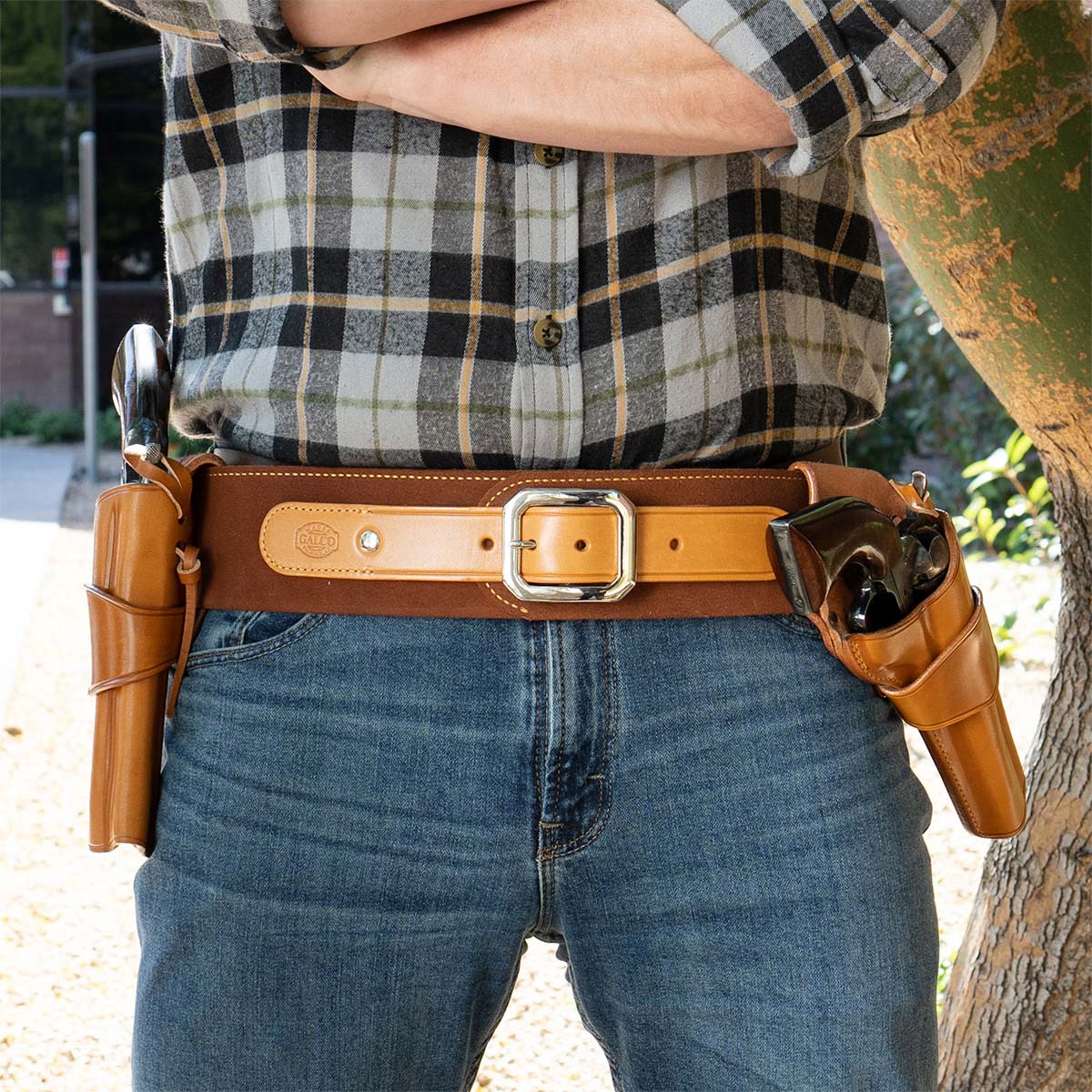
Source: dentaa.ru
What Is A Cross-Draw Holster?
A cross-draw holster is a carry method where a right-handed person wears the holster on the left side, and a left-handed person wears it on the right side. The holster typically sits around the 9–10 o’clock position for right-handers and tilts forward. The draw stroke moves the hand across the torso to access the grip.
You can find cross-draw setups for belt carry, chest rigs, and some shoulder holsters. It is common for people who sit for long stretches, like drivers or office workers, because the gun is easier to reach without twisting. Outdoors, hunters and anglers like it because chest straps and heavy layers often block strong-side hip carry.
In my field use, cross-draw improved access in a truck, on long road trips, and during hikes with a waist belt. It also reduced pressure points on the hip when carrying a pack.
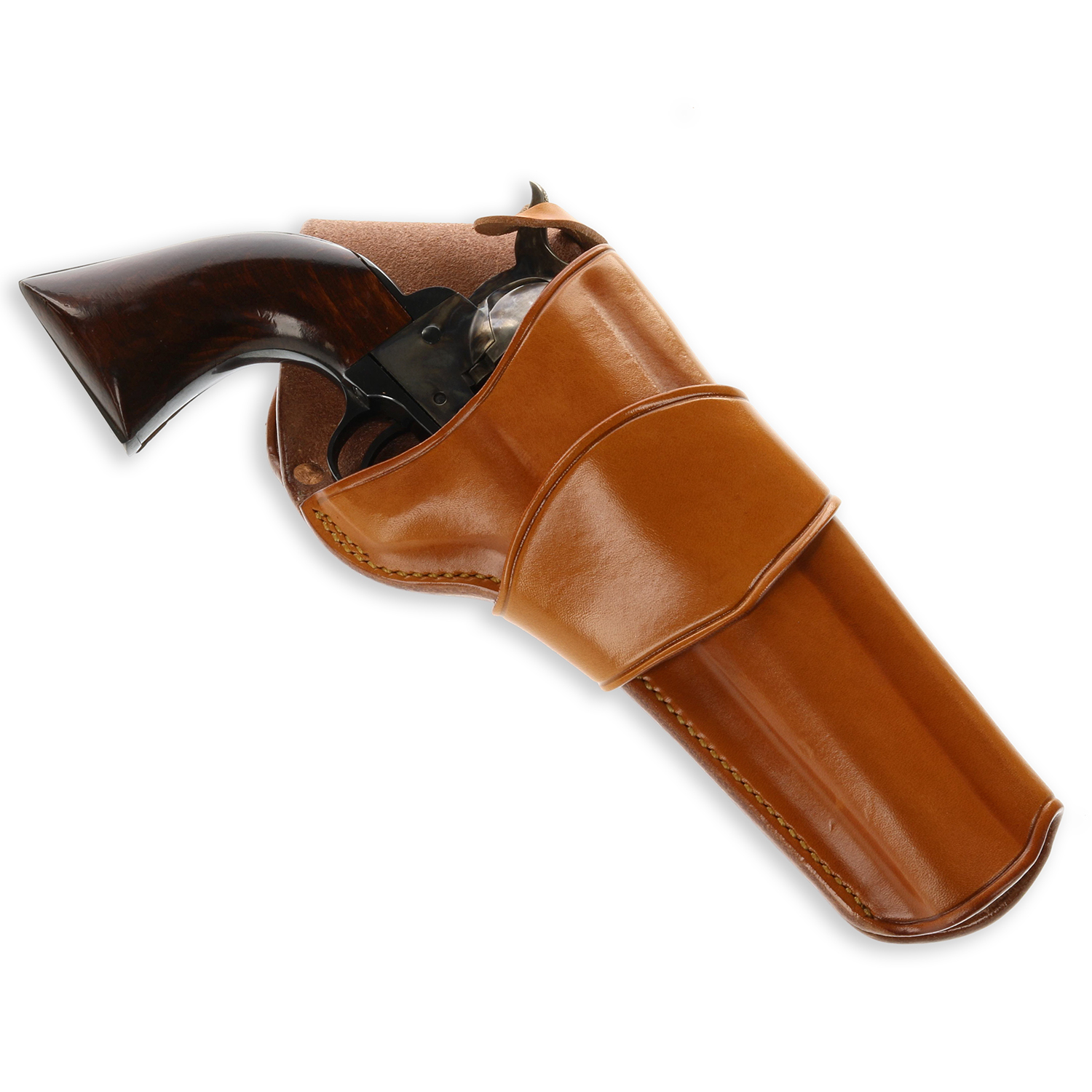
Source: www.galcogunleather.com
How Cross-Draw Carry Works
Cross-draw relies on placement and angle. The holster rides forward of your hip bone on the non-dominant side with a forward cant. This angle presents the grip to your dominant hand as you reach across your body.
Key parts:
- Placement: Slightly ahead of the midline, not directly at the center, to balance access and concealment.
- Cant: A forward tilt that makes the grip easy to grab while seated.
- Retention: Friction fit, tension screws, or a strap to keep the gun secure during movement.
Practical note from experience: small changes in belt height, pant rise, and holster cant can make big comfort differences. Adjust a little at a time and test while seated, walking, and bending.
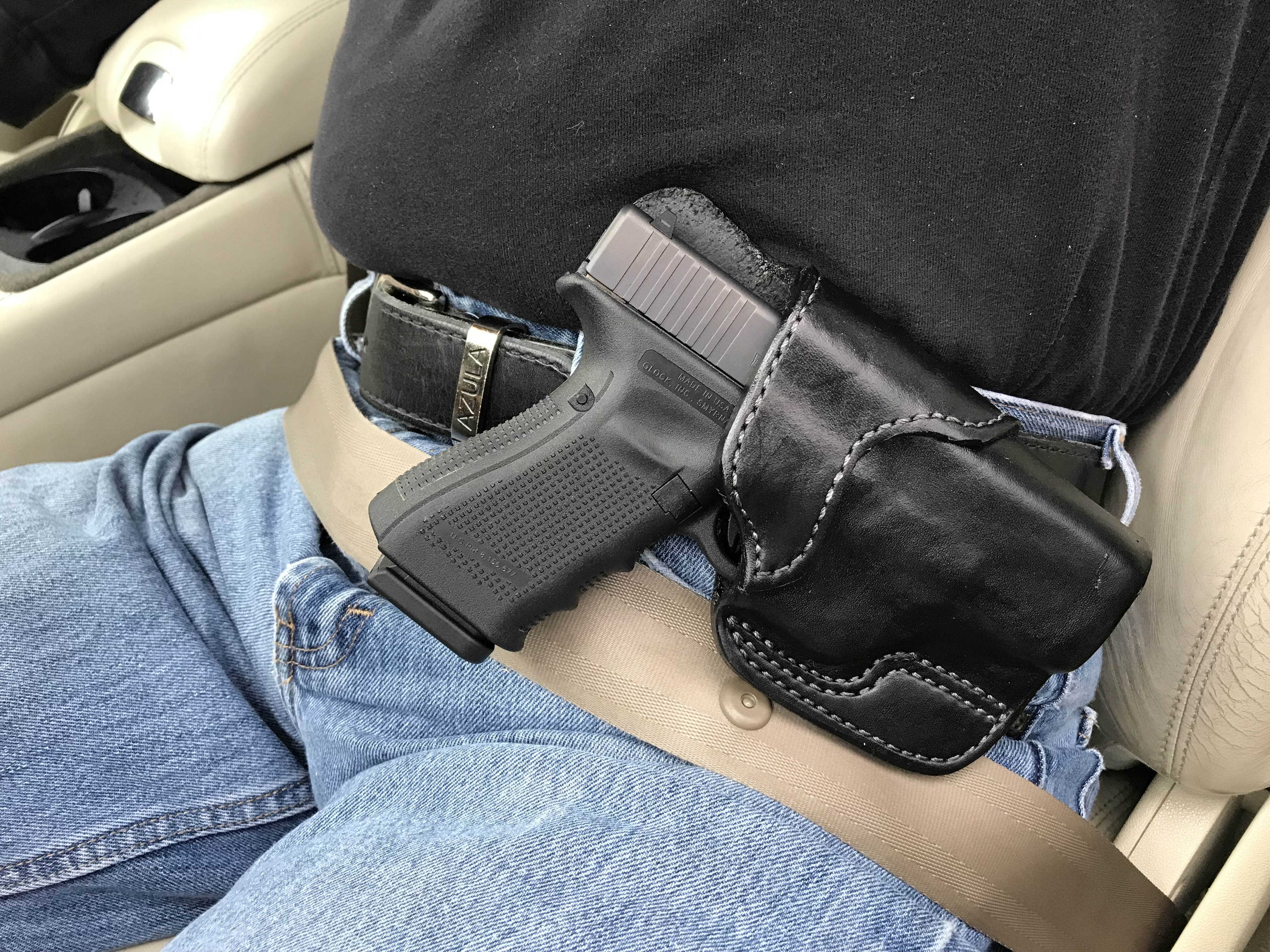
Source: azulagunholsters.com
Benefits Of A Cross-Draw Holster
Cross-draw is not for everyone, but it shines in clear scenarios.
Top advantages:
- Better access while seated: Easier reach in vehicles, at a desk, or in wheelchairs.
- Comfort with packs and layers: Works well under jackets and with hip belts or chest straps.
- Reduced hip pressure: Offloads the dominant-side hip for people with pain or prior injuries.
- Natural reach for some body types: Shorter torsos or larger midsections may find it easier to access.
- Options for outdoors: Chest and cross-draw hybrids make sense for fishing, ATV riding, and camping.
Personal insight: after a back tweak, I moved to cross-draw on travel days. The less I twisted, the better I felt by day’s end.
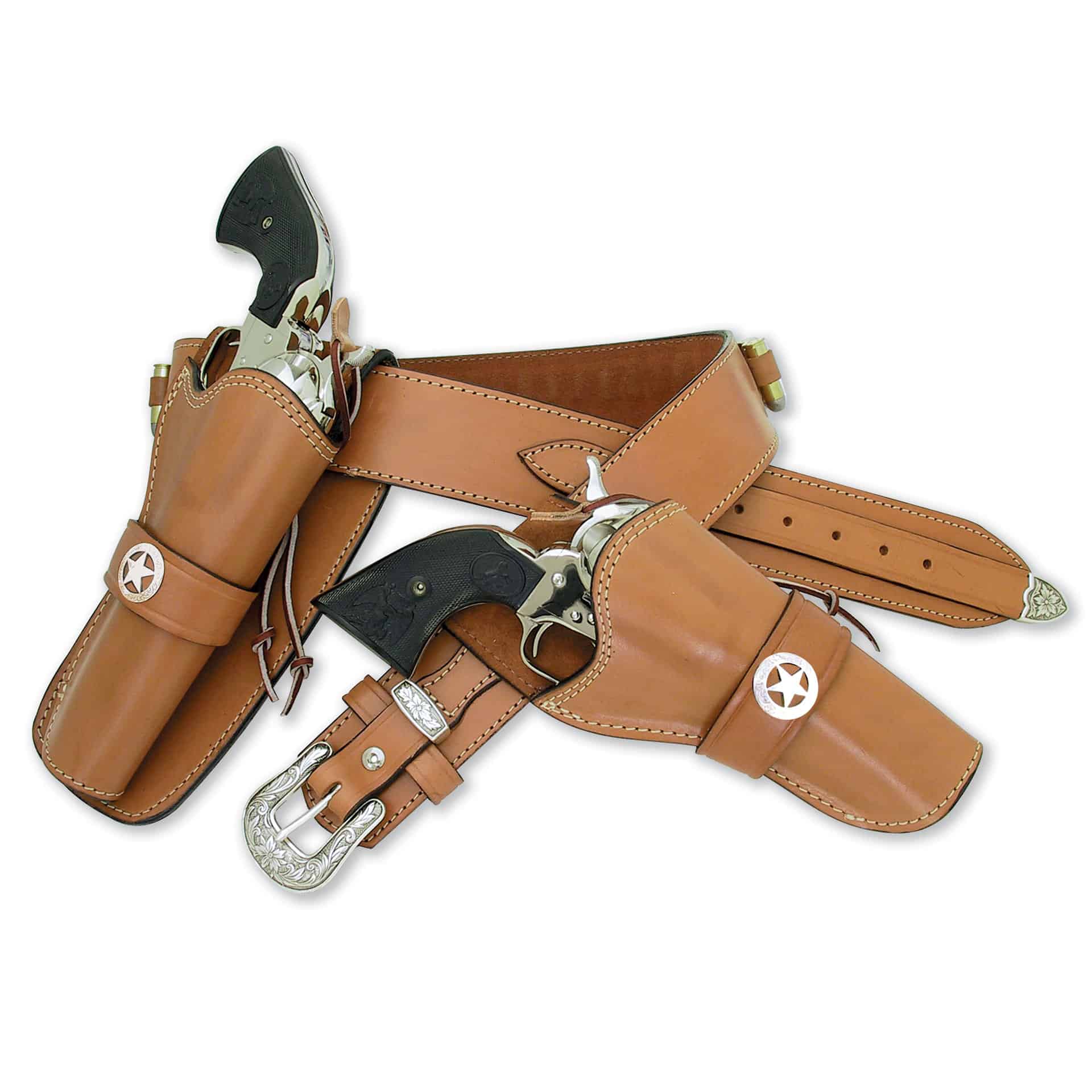
Source: kirkpatrickleather.com
Trade-Offs And Limitations
Every carry method comes with compromises. Cross-draw has a few.
Consider these downsides:
- Concealment challenges: The grip can print under thin shirts, especially when bending.
- Muzzle direction when drawing: Without training, the muzzle can sweep across the body. Safe practice is essential.
- Close-quarters retention: The gun sits closer to centerline, which can be easier for someone to grab if you are not using solid retention and body positioning.
- Not ideal for all dress codes: Slim belts or tight waistbands may not support the holster angle.
- Some ranges restrict it: Certain ranges do not allow cross-draw due to safety policies. Always check first.
Lesson learned: I had to change shirts and belt stiffness to keep printing low. A quality belt and a slightly looser cover garment fixed most issues.
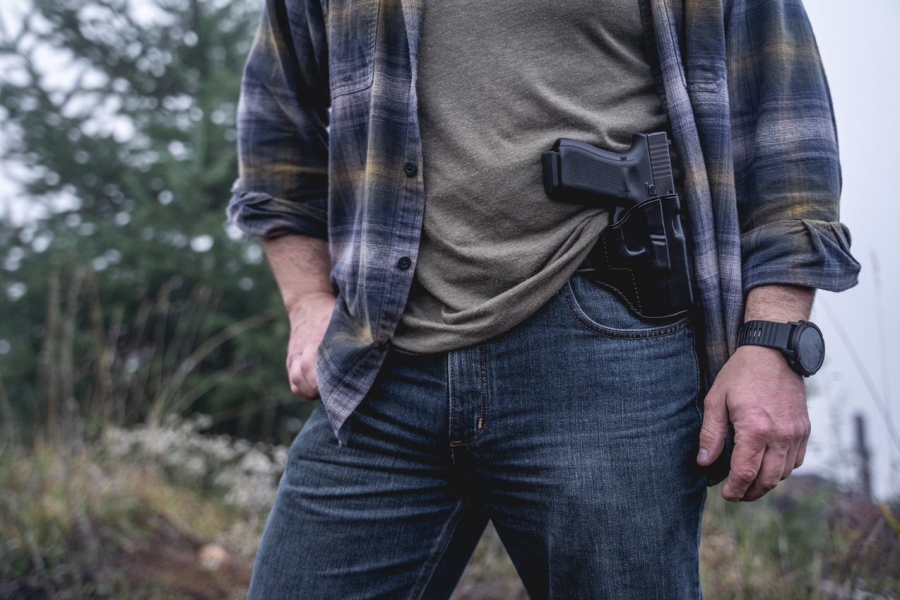
Source: www.galcogunleather.com
Who Should Consider Cross-Draw?
Cross-draw is a strong option if your day looks like this:
- You drive for hours and need consistent access.
- You work at a desk and want comfort during long sits.
- You hike, hunt, or fish with chest straps or hip belts.
- You have shoulder or hip pain that makes strong-side draw hard.
- You prefer a seated-access setup for mobility reasons.
People who often stand in crowds or need tight concealment under fitted clothing may prefer other methods, like appendix or strong-side IWB. Try a safe, unloaded fit test at home to see how it feels with your daily clothes.
Types Of Cross-Draw Holsters
Several designs fit the cross-draw role. Each has trade-offs.
- Leather belt holsters: Traditional look, comfortable, molds to the body over time. Needs break-in and care.
- Kydex belt holsters: Firm retention, crisp draw, minimal maintenance. Can be less forgiving on comfort.
- Hybrid holsters: Kydex shell with a leather or synthetic backer. Good balance of comfort and retention.
- Chest rigs: Popular for hiking and fishing. Keeps the firearm high and accessible over layers.
- Shoulder holsters: Some models allow cross-draw. Great for coats, but need careful fit and practice.
Tip: choose a model made for your exact firearm. Generic fit can cause poor retention or slow draws.
Fit, Comfort, And Setup Tips
Small tweaks make a big difference. Keep it simple and safe.
Try these steps:
- Start with an unloaded firearm to test placement and angle.
- Use a quality belt that matches the holster’s clip or loops.
- Adjust cant so the grip meets your hand without twisting your wrist.
- Sit, stand, and walk to test comfort. Make micro-adjustments.
- Check that clothing clears the grip and trigger guard fully.
From experience, one belt hole tighter often stabilizes the holster and stops printing. Breathable undershirts can prevent hot spots in warm weather.
Retention, Training, And Safety
Keep safety first. Cross-draw needs careful practice because the path of the draw crosses the body. Good training reduces risk and builds smooth habits.
Best practices:
- Follow range rules and local laws. Some ranges require specific draw drills or disallow cross-draw practice.
- Keep your trigger finger indexed high until sights are on target and you’ve made a legal decision to press the trigger.
- Use dry practice with dummy rounds to build clean garment clearing and grip.
- Choose retention that matches your environment. Commuters and travelers may benefit from added retention.
Industry guidance often stresses muzzle awareness and consistent grip. A clean garment sweep and a straight wrist help you maintain control and avoid snagging. Seek qualified instruction to build safe, repeatable skills.
Legal And Practical Considerations
Regulations vary by state and locality. Policies also differ by workplace and private property.
What to check:
- Licensing and reciprocity for concealed or open carry where you live and travel.
- Prohibited locations and transport rules in your area.
- Range or club policies for cross-draw practice.
- Holster coverage of the trigger guard, which is essential for safety.
Transparent note: laws change often. Verify current rules with official sources before you carry. When in doubt, consult a qualified attorney familiar with firearm statutes in your state.
Real-World Examples And Lessons Learned
I tested cross-draw on a 700-mile road trip. Strong-side carry dug into my seatbelt. Cross-draw let me sit upright and relaxed. A slight forward cant cut printing under a flannel shirt.
On a spring hike with a heavy pack, a chest-style cross-draw kept the firearm clear of the hip belt. I learned to choose a tighter retention setting to prevent bounce on steep descents. At the range, I practiced slow, deliberate garment clears with an unloaded firearm until my movements were smooth.
Mistakes to avoid:
- Skipping a sturdy belt. Holsters ride better and safer with proper support.
- Ignoring concealment checks. Sit, bend, and twist in front of a mirror before you go out.
- Overlooking retention. Tension screws are your friend. Tune them.
Frequently Asked Questions Of What Is A Cross-Draw Holster?
Is a cross-draw holster good for concealed carry?
It can be, especially under jackets or looser shirts. Printing can be more noticeable with tight clothing. Fit, cant, and cover garments matter.
Is cross-draw safe?
Yes, when used with a holster that fully covers the trigger guard and with proper training. Focus on muzzle awareness and a high trigger finger index during the draw.
Why do drivers like cross-draw?
Access is easier when seated, and the seatbelt doesn’t pin the firearm under your dominant-side hip. It reduces twisting and pressure points.
Can I use cross-draw for left-handed carry?
Absolutely. Left-handed carriers place the holster on the right side with a forward cant, so the left hand reaches across the body to draw.
What belt do I need for a cross-draw holster?
A stiff, purpose-built gun belt supports the holster and reduces shifting. Match the belt width to the holster loops or clips.
Do ranges allow cross-draw practice?
Some do, some don’t. Many have rules about draw types. Call ahead and follow posted safety policies.
Conclusion
Cross-draw holsters solve real problems for people who sit a lot, carry with outdoor gear, or need a more comfortable setup. They offer easier access while seated and can ease pressure on sore hips and backs. The trade-offs are manageable with the right holster, a quality belt, and safe, thoughtful practice. If you’ve wondered what is a cross-draw holster?, now you can test it with confidence.
Try a short at-home fit session with an unloaded firearm. Adjust cant, check concealment, and see how it feels in your daily routine. Want more insights like this? Subscribe for updates, explore related guides, or drop a comment with your questions and experiences.
Watch This Video on What is a cross-draw holster?
